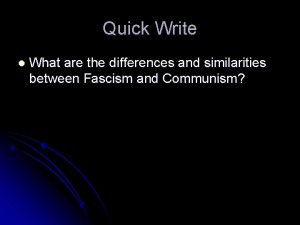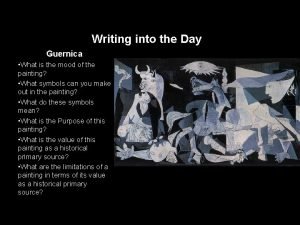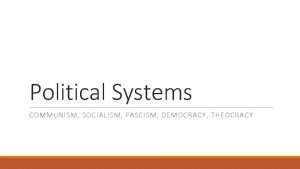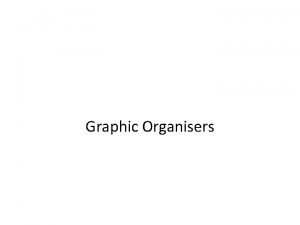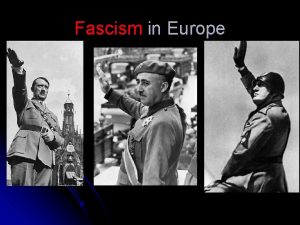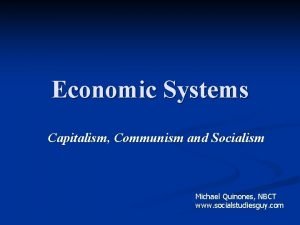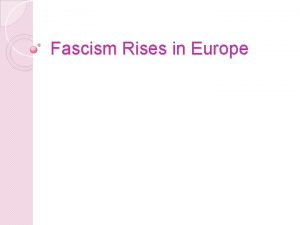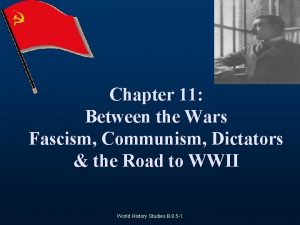RISE OF COMMUNISM FASCISM DICTATORS Unit 7 SOVIET







- Slides: 7

RISE OF COMMUNISM, FASCISM, & DICTATORS Unit 7

SOVIET UNION • Lenin ended Russian involvement in World War I, sent Leon Trotsky to negotiate peace with Central Powers • 1922, Lenin officially created new state known as Union of Soviet Socialist Republics – USSR – “Soviet Union” • Other member of communist party vying for control was Joseph Stalin • 1929, Stalin removed Bolsheviks from revolutionary era from Politburo, established a dictatorship • Collectivization is a system in which private farms were eliminated and government owned all land with peasants working it • In response, Stalin cut off agricultural supplies to Ukraine, resulting in the deaths of 5 -7 million people – The Great Famine

JOSEPH STALIN • Stalin strengthened control over party, those who resisted were sent to forced labor camps in Siberia – Gulags • Great Purge - Stalin expelled and killed army officers, diplomats, union officials, intellectuals, and other dissidents • Stalin purged the communist party of Old Bolsheviks, many were condemned to death • Stalin solidified totalitarian regime, leaving few people that would oppose him

COMMUNISM • Communism- type of government and philosophy. Its goal is to form a society where everything is shared equally. • Government owns and controls most everything including property, means of production, education, transportation, and agriculture.

FASCISM ITALY: • Benito Mussolini created Fascism in 1922 when he established a dictatorship in Italy • Fascism-- a militant political movement, socialist and conservative, that emphasized loyalty to the state and obedience to the leader • Weak political leadership, high unemployment rates, a depressed economy, communist fears, and disappointment with Treaty of Versailles helped Fascist Party gain power • Mussolini used force to establish dictatorship, ending freedom of press, encouraging economic growth by ending labor conflicts, disbanding labor unions

MUSSOLINI • Mussolini killed political opponents and abolished opposition parties, believing that too many political parties would destroy any type of unity in the state • Instead, Mussolini supported a single party with a strong leader (surprise, surprise… he meant himself!) • By seeking military conquests, Mussolini looked to regain the old glory of ancient Rome

NAZISM • The Nazis started as a small right-wing political group • Eventually were renamed the National Socialist German Worker’s Party (Nazi) • Adolf Hitler emerged as leader of the Nazi Party when he wrote Mein Kampf (My Struggle) in 1923 while in jail • Became the blueprint for the Nazi Party Platform • Blamed Germany’s defeat in WWI and subsequent problems on “traitors” - communists and Jews • Nazi Party promoted German nationalism using Hitler’s theory of the “master race” • Aryan race was considered superior to all others and Hitler advocated German expansion using nearby “living space” in Eastern Europe • Hitler continued to use racist philosophy to justify many of the actions of the Nazi Party • Purged Germany of its former cultural values, including religion
